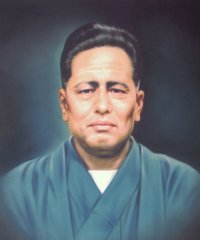

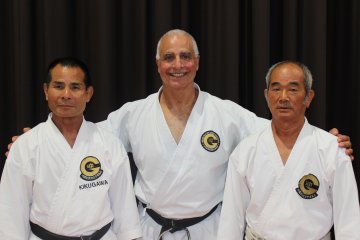
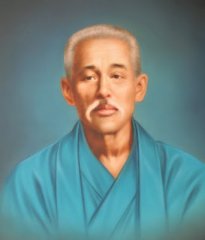
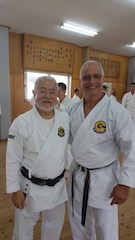
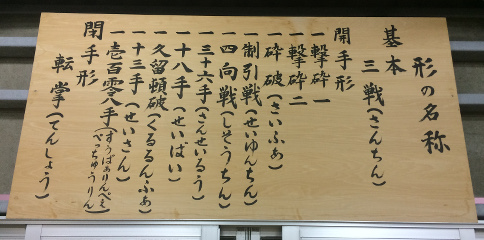
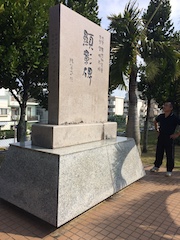
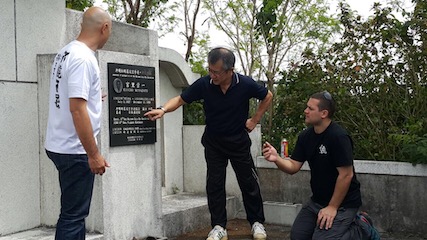
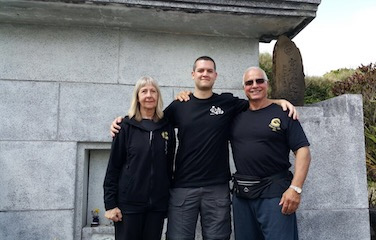
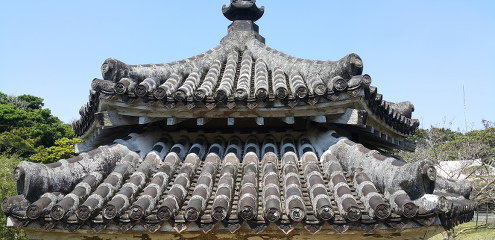
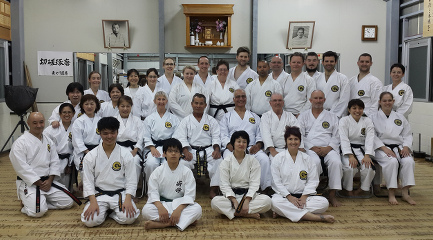




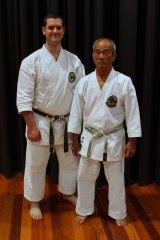
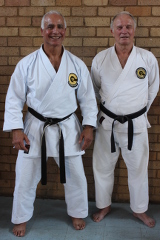
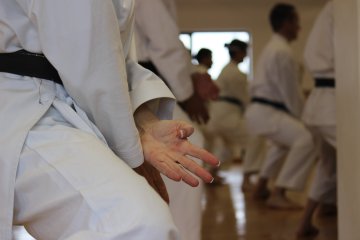




















You Are Here: About » Goju-Ryu Kata » Gekki Sai Dai IchiSuparinpei (Pechurin) - 108 Hands: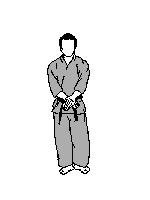  The longest of all the Goju-Ryu kata, Suparinpei is said to contain all the techniques from all the Goju-Ryu kata. It is made up of quick blocks and simultaneous strikes. In order to finish this kata with the same strength in which you start it you need to build up your ability to pace yourself and your breathing.
It is thought that this kata was composed by Master RyuRuKo form the Southern province of China, Fukien. He then passed the secret of this kata to Kanryo Higaonna, and on to Chojun Miyagi. It is the only kata still pronounced in its chinese form. To watch it looks similar to the Chinese White Crane kata and the Kempo Kata of the Dragon. Traditionally there were three levels to this kata.
This kata holds Buddhist roots, as Buddhists believe that man has 108 evil passions. A bell is rang on the 31st December every year in Buddhist temples to drive away those 108 evil passions. Hannya Sinkyo is a Buddhist scripture describing: When the six aspects of kon (eye, ear, tongue, nose, body, and spirit) touch the six aspects of jin (colour, voice, smell, taste, touch, and justice), the six kon create three worldly desires of good, bad, and peace, and become eighteen worldly desires (Seipai). Then another three worldly desires pain, pleasure, and abandonment touch the six kon. This make another eighteen worldly desires. This makes thirty-six (Sanseiru) altogether. 36 Is a significant number from the kata Sanseiru. 3 represents the past, present, and the future. Obviously 3 x 36 = 108. It is believed these named associations with Buddhism is based upon the lack of factual knowledge of the true nature of these quan. Suparinpei could also relate to the 108 thieves that robbed from the rich and gave to the poor in the 1600s in China. (Robin Hood Style) As it is a "worshipping kata" it is also important that when you are performing this kata you do so from the bottom of your heart, and respect for your Sensei, the Kata, and the Discipline. Suparinpei is deceptive in that it appears simple in execution but when combined with transitions and changing tempos, it is only surpassed by Sanchin in technical difficulty and understanding. With the cutural changes that took place in China during and after the Boxing Rebellion (1900) and the fall of the Qing Dynasty (1644-1911), little emphasis was placed on learning such complex arts. Most who learned the fighting arts after this time, did so as a means of exercise, recreation or artistic performance. In addition, the wide-spread use of firearms reduced the need and effectiveness for hand-to-hand combat as a means to civil defense. Suparinpei is also found in the following styles of Chinese Boxing: Dragon, Tiger and Monk Fist.
|